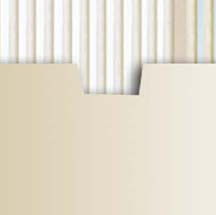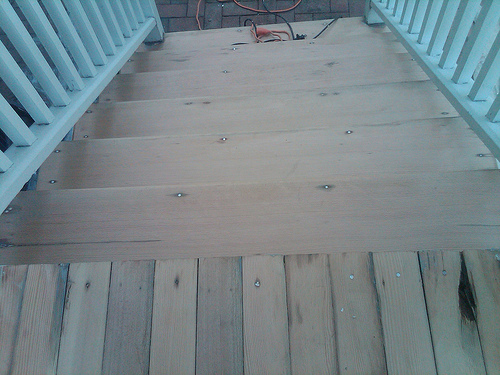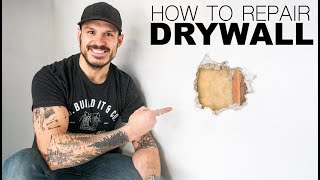[post_name drywall mud Drywall Repairs Made Simple

The strategy for the best ways to eliminate drywall structure depends on the product being removed and the problem of the wall surface. The most usual method for removing appearance from repainted drywall calls for fining sand off the high portions of the structure and also filling it in with at the very least 2 thin layers of joint compound - called skim coating. Another method for unpainted distinctive walls and ceilings, including popcorn ceilings, is spraying water externally to loosen up the structure so you can scrape it off.When a wall surface has
comprehensive splits, peeling paint or water damage, it may be much easier to cover the existing wall with 1/4 -inch drywall or get rid of the existing wall totally and change it.Whatever method you use to get rid of a distinctive surface area from drywall, safeguard yourself from direct exposure to building and construction dust, lead and also asbestos.Removing textured wall surface surfaces is a demanding process that takes patience.
Below's how you can deal with some common problems so your walls will certainly be smooth as well as your work, profitable.How to get rid of drywall appearance by skim coating Trouble: Uneven surface.Solution To avoid creating an unequal wall surface when you're getting rid of the texture, do not make use of a belt sander. It will collect the texture.
Rather, get rid of high tops in the structure utilizing a pole sander with 120 grit or a 5-inch floor scraper.Problem: Bulgy looking patches.Solution Remove any loose product with a stiff brush, scratch high areas and also wipe with a moist cloth. To apply the initial layer of joint compound, begin at the leading and job across and down. "One of the most vital point is not to make use of excessive material ,"states Ivan Solis, president of Chicago-based Solis Building and construction."If you make use of too much joint substance, it will certainly be tough to attain a smooth surface area. You'll have to do a great deal of sanding. "Don't fret regarding surges, simply attempt to cover the appearance as well as obtain an also coat on the wall surface. Hold the joint blade at a 30-degree angle and also press it in. "Keep it tight and also smooth,"states Solis, that advises using a 10 -or 12-inch joint knife.Alternate the direction of the skimming strokes with each brand-new coat of mud. If you use the initial coat flat, apply the 2nd layer up and down. Return excess mud from the surface to the rim of the frying pan, maintaining the blade of the blade clean.When the first coat is completely dry, use the second layer to load in the surges. Again, start on top in the edge and job across and also down. As you work, blade off any big pieces of the initial layer, using your blade. If there are still low and high areas, you may require a 3rd coat. When the coat is dry, finish with a final sanding.Problem: Joint substance that sets as well swiftly or is as well difficult to sand.Solution Select the appropriate substance for the task. When a wall texture will need a number of layers of joint substance to smooth the surface area, use a setup substance like Sheetrock Easy Sand for the initial layer."Easy Sand 90 is a chemically establishing substance that will offer you about 90 minutes to work before it establishes,"claims Jeff Hartin, item manager for USG's Ready Mixed products. The product is ideal for heavy fills as well as sands conveniently."The great feature of a setup compound is that you can use the first coat and also begin a 2nd layer as quickly as the very first one has solidified,"states Solis.For the second or final coat, Hartin and also Solis suggest a ready-mixed joint compound, such as Sheetrock And also 3. The light-weight item is much easier to spread out, enables a thinner application, and is much easier to sand.Problem: Spots seep with the joint compound.Solution These issues are usually because of incorrect attachment and are common on many Do It Yourself painting tasks. If the textured wall is peeling off or plaster as well as textured joint compound are diminishing, eliminate loosened product with a scraper, sand as well as coat the surface with primer/sealer prior to skim coating.Problem: Cracks as well as damages reappear.Solution Repair splits and also dents prior to skim finishing. To repair them, tape over the cracks with drywall tape as well as protect them with joint compound. When the wall is smooth, a drywall guide as well as sealant will seal the
wall as well as help protect against fractures as well as dents from reappearing. Primer likewise counteracts the pH of the wall surface for an extra also appearance.Problem: Peeling off paint and also gurgling in the paint finish.Solution These problems are typically as a result of improper attachment. If the textured wall is peeling off or plaster and also textured joint compound are dropping off, remove loosened product with
a scraper, sand and layer the surface area with primer/sealer prior to skim coating.Problem: Pitting.Solution Pits on the surface area of the drywall are air bubbles that were not effectively loaded or that were exposed throughout sanding. Air gurgles arise from over -or under-mixing the joint compound. Apply pressure to the bubbles with the joint blade, till the pits are gone. If you don't observe them up until the wall is dry, cover them with joint substance and also sand.Problem: Over-sanding; missing out on low and high spots.Solution Sand excessive and also you risk damaging the surface area paper. If that occurs, cover the location once more with joint substance. To prevent missing low and high spots, utilize a clamp-light or various other light near to the wall surface to find issue locations. Sand systematically, functioning from the ceiling to the flooring in slim sections.How to get rid of a textured surface area from drywall by scuffing
Problem:
Wall damaged by water and also scrapers.Solution Specialists suggest moistening wall surface appearances with a spray container to loosen up the product. After that utilize a scrape with a level, vast blade to eliminate the texture. Use just enough water to loosen up the product or you could damage the drywall. If you note the sheetrock with the edge of your scuffing blade, spot it with joint compound.How to eliminate a distinctive surface area from drywall by covering wall surfaces with drywall Problem: Reinstalling trim.Solution "Something to remember when using 1/4-inch drywall over an existing
wall surface is that not only will your wall, door as well as window casing look a 1/4- inch thinner but all of the "joints"will need to be filled with joint compound as well as caulked, "states Solis. You could have to eliminate trim as well as re-install it, and electrical outlets could need extensions to bring them purge to the wall.
How to Install Your Own Drywall
I do not care just what your drywall water damage actually is, the first thing that were going to should do is to discover out where the water damages is actually coming from. One of the most usual offender, will certainly be a roofing system leakage or a plumbing water system pipe that is leaking. Let's get down to the base, actually. That's where a lot of the drywall water damages repairs will have to be done.If you have water leaking from your roofing system, there's a great chance that the drywall ceiling will certainly be damaged and if it has an acoustical or snacks kind ceiling structure on it, a large area of the ceiling appearance will certainly need to be removed or eliminated and after that re-sprayed after the water damages repairs have actually been made.If your ceiling is smooth, this will be the easiest ceiling repair service that you can make, most of the moment. Sometimes people get the impression that a smooth water harmed ceiling from a roofing system leakage, will certainly be simpler to repair and also their right. The issue is, after the repair has actually been made, if it isn't done properly, the repair service will certainly stick out like a sore thumb.Now what concerning a water damages ceiling that has a light texture or a hefty texture. This will typically be the hardest ceiling repair work making. It's tough to match some kinds of ceiling appearances. The heavier the structure, the more challenging it will certainly be to repair. If you have actually a gently sprayed orange peel kind structure, you could count on your own fortunate. This repair will normally be less complicated to end up than a smooth ceiling repair.You repair the water damages ceiling, as well as you do not like how it looks. Below's the very best method to repair this trouble. You will certainly have to smooth out the entire ceiling, using drywall joint substance, up until it is entirely flat or smooth or scratch all the acoustic old ceiling texture off and begin with scratch.Once the entire ceiling is smooth, you can use your brand-new structure or acoustic ceiling. Some specialists will in fact figured the work this way, just to conserve themselves a view of frustrations later.If there is various other water damage to the ceiling, you might also consider eliminating every one of the drywall, replacing it as well as re-texturing the whole ceiling.

Seven Simple Steps to Repair Drywall
Drywall repair Coral Gables - sheetrock prices
